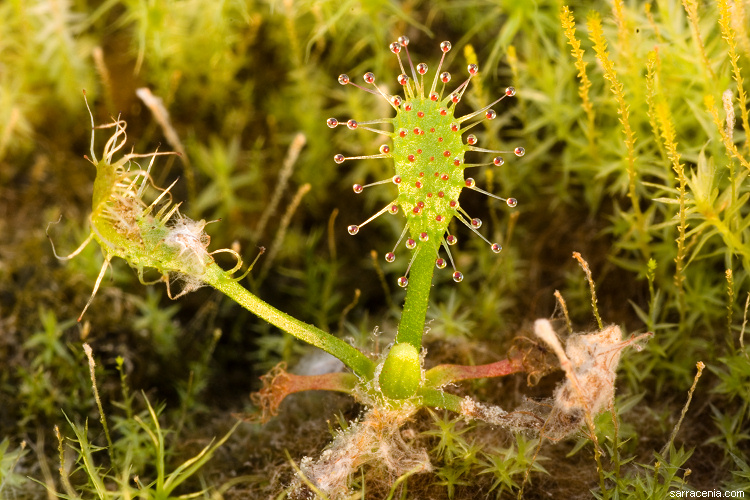
Fast forward:
When we returned home I examined the material we collected. I dissected the fruit and found that it contained many
seeds. The seeds were exactly the shape expected for D. linearis, and inconsistent with
the shape of any other North American species. Indeed, I would have been fairly confident in identifying this plant based up
the seed characteristics alone. The leaves, when carefully moistened and flattened, were also consistent only
with D. linearis.
The leaves and seeds were dried and herborized. Meanwhile, I tested the viability of ten
seeds by wet-stratifying them for 6 weeks, then planting them on moist peat-sand. Within two months, three seeds
germinated and the seedlings grew for a few months before entering dormancy. After a three-month refrigerated dormancy period
I returned them to a growing area. The plants resumed growth, and another three seeds germinated--in my small sample,
at least 60% of the seeds were viable!
Fifteen months after our trip to Montana, the seedlings are still too small to show their species characteristics, but I
am hopeful they will continue to persist in cultivation. I have successfully grown
D. linearis from seed to flowering, so have
some experience with these plants. I'll keep
the readers of Carnivorous Plant Newsletter posted on further developments.
In closing, I'd like once again to thank those scientists who were able to provide me with useful background information to prepare
us for this trip: Peter Lesica (University of Montana), Maria Mantas (The Nature Conservancy),
Scott Mincemoyer (Montana Natural Heritage Program), Lois Olsen (USDA Forest Service), Hawkeye Rondeau, and
Steve Shelly (USDA Forest Service).